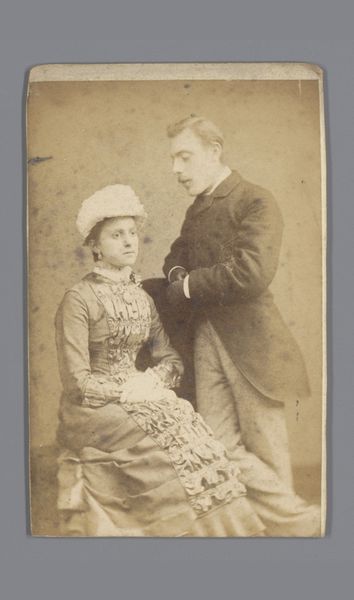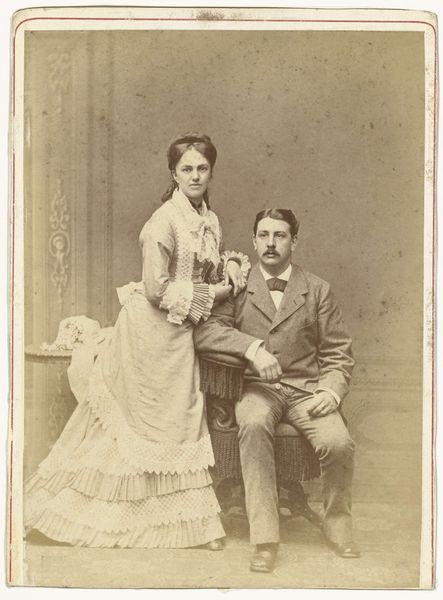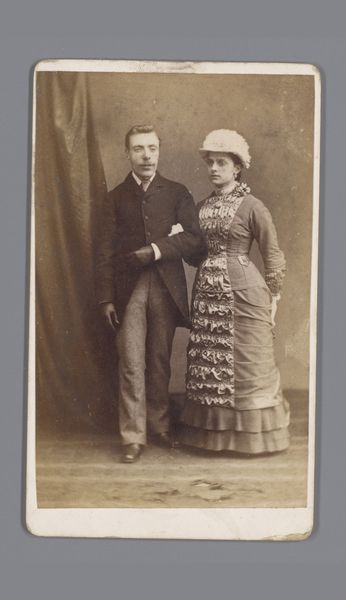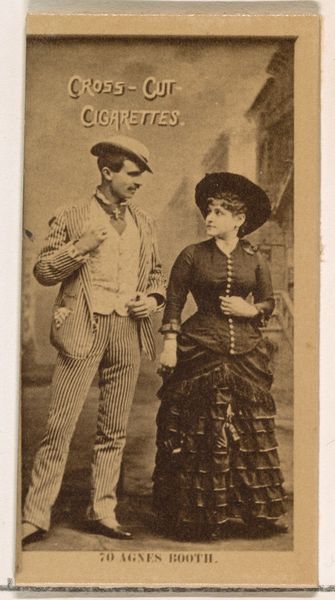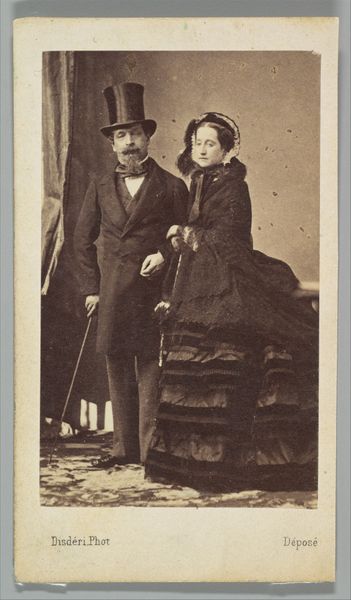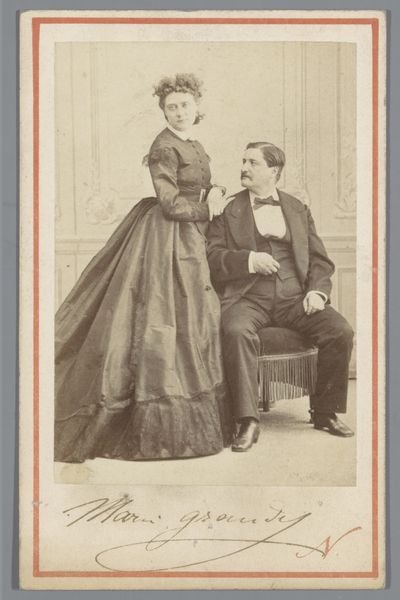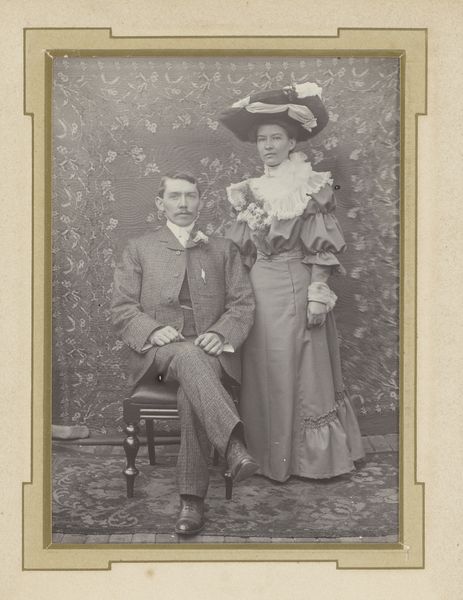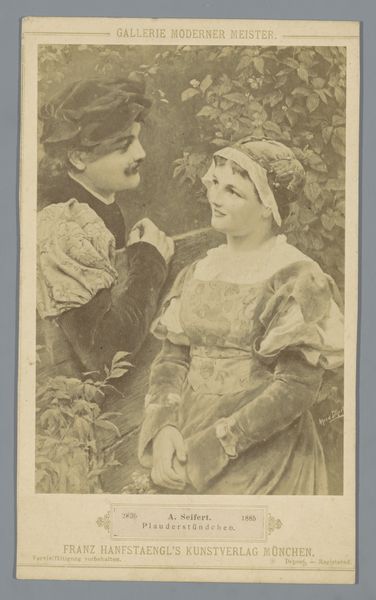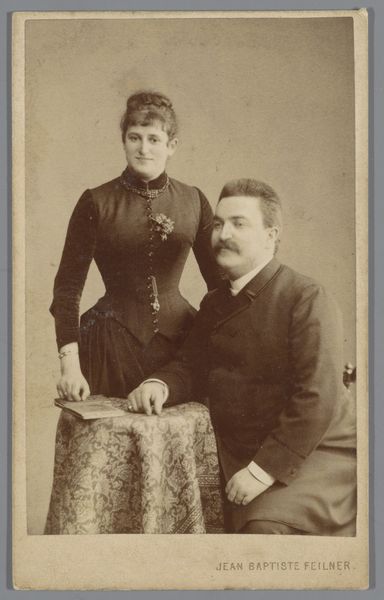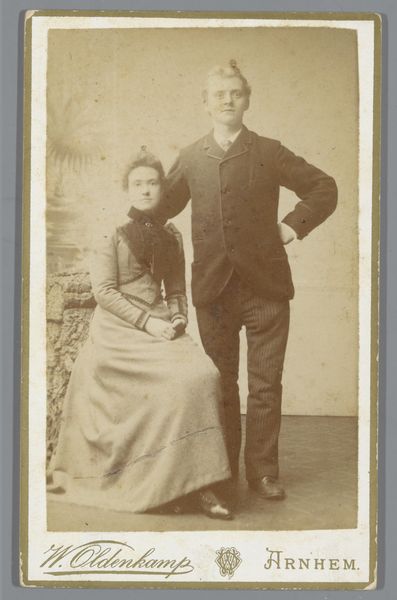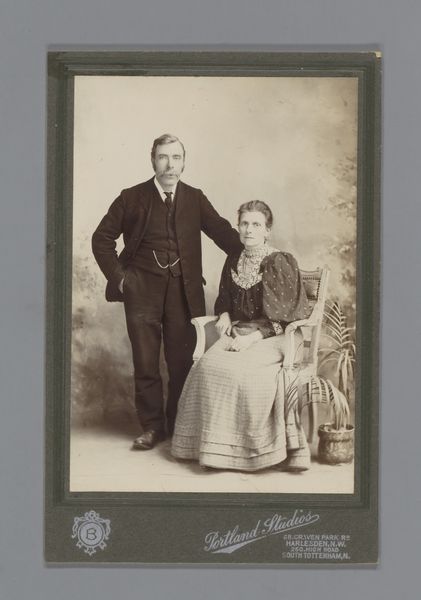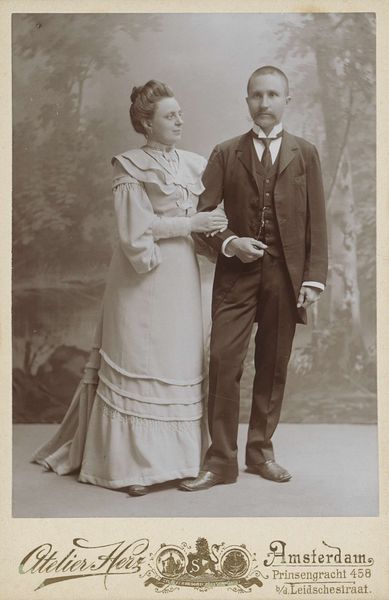
photography
#
portrait
#
pictorialism
#
photography
#
historical photography
#
19th century
#
genre-painting
Dimensions: height 103 mm, width 63 mm
Copyright: Rijks Museum: Open Domain
Curator: Here we have Willem Gerhardus Kuijer's "Portret van een onbekende verklede man en vrouw," taken sometime between 1880 and 1906. It resides here at the Rijksmuseum. Editor: Immediately, I feel transported—like stepping into a sepia-toned play. It's intriguing, slightly awkward, yet there's an undeniable charm in its rigid formality. Curator: Precisely! The work falls into the category of pictorialism. This aesthetic movement really explored photography's capacity as fine art. Notice the soft focus and the almost painterly quality of the light? This approach challenged photography's simple role as documentarian. It moved toward subjective expression, very much a break from straightforward portraiture. Editor: Yes! There's a fogginess, softening what would otherwise be stark detail. It evokes a theatrical backdrop. Their costuming feels so deliberate, lending an amateur theatrical ambiance—slightly imperfect and very human. Do you get that? Curator: Indeed. Think about the genre painting themes that photographers engaged with then; images of everyday life rendered with dramatic flare, reflecting bourgeois aspirations to higher culture, right? Here we have figures posing as something "other." What that "other" represents... well, that's the exciting question. Editor: Are they playing at being… peasants? Is it satire, genuine fascination, or maybe some ritualistic costuming lost to history? I find it fascinating—a coded snapshot into social rituals and perhaps a peek into how people negotiated their identities during the era. Curator: The layers are complex! Considering class, the construction of identity through attire, and the burgeoning accessibility of photography to middle-class consumers—the photo offers fertile ground for analyzing how social roles were both reinforced and perhaps, playfully subverted. Editor: Right, like a 19th-century dress-up party… but preserved! And what were they trying to convey through this tableau vivant? The ambiguity makes it incredibly compelling—we're left with hints rather than explicit narratives. Curator: Absolutely. This highlights how historical photography became a medium for staging performances of identity, reflecting social norms and offering subtle critiques of power dynamics, and social categories. Editor: I'll be pondering those striped stockings for days. Thank you, that was delightfully informative and weird! Curator: The photograph invites many viewings—each revealing additional interpretive pathways.
Comments
No comments
Be the first to comment and join the conversation on the ultimate creative platform.
